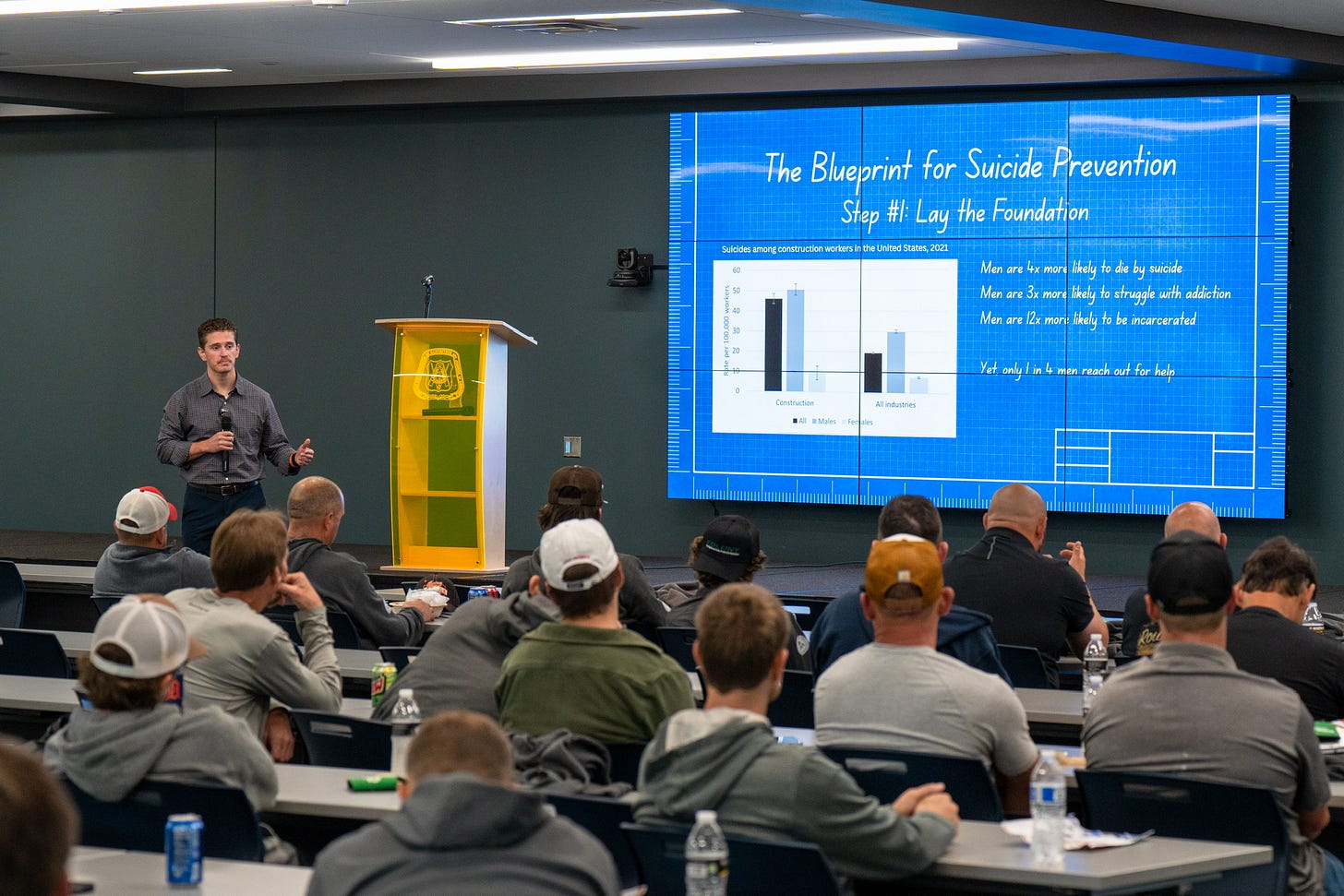Detroit, MI — A union carpenter joked, “When I put my hard hat on, I’m just hoping to get through the day!” He didn’t know his audience included the speaker’s fiancé. Leah later shared this with me and I laughed, because I know that feeling all too well. Pouring concrete, days that feel like survival more than work. That kind of job is grueling. But what I’ve suffered through beyond physical labor… losing my brother Austin to suicide… that was the hardest work I’ve ever done.
Construction isn’t just hard, it is dangerous in ways we don’t always see. Recent data shows that suicide is one of them.
The Problem We’re Facing
The construction industry has one of the highest suicide rates of any U.S. workforce, especially among men.
For example, in 2021 there were 56 suicides per 100,000 male construction workers, compared to 32 per 100,000 for men across all industries.
Over 5,000 construction workers die by suicide every year in the U.S.
Introducing: The Blueprint for Hope
I’ve created a blueprint for suicide prevention specifically designed for the construction industry. It’s built on lived experience, loss, and research. I’m on a mission to share it with every job site I can reach, so we can see more smiling men in hard hats, and fewer smiling faces in frames above caskets.
Key Elements of the Blueprint:
Build the Foundation - the landscape of mental health in the construction industry
Raise the Frame - tools for mental health support
Add the Insulation - protective factors to combat the capability for suicide
Secure the Site - reducing access to lethal means
Finish the Work - reinforcing hope
Why Now
We already know: the traditional image of construction work - hard hats, heavy lifting, long hours - masks a hidden burden. And we can’t keep ignoring it. Every statistic represents a man, a father, a brother gone too soon. Every jobsite has people who deserve more than survival mode.
Hope in Hard Hats is not an idea, it’s a call to action. It’s proof that change is possible.
Call to Stakeholders
I call on:
Contractors and trade unions to adopt this blueprint as part of job‑site safety culture.
Safety directors and supervisors to lead regular trainings, toolbox talks, and check‑ins that include mental wellbeing.
Manufacturers, suppliers, and industry leaders to fund mental health programs and help reduce the stigma.
Every worker who’s ever felt the weight of a hard hat: your voice matters. Your pain isn’t shame. Asking for help isn’t weakness.
About Ethan Getchell
Ethan Getchell is a clinician‑creator specializing in men’s mental health, personal resilience, and suicide prevention. He draws on his professional training and personal journey following his brother Austin’s loss to advocate for systems and cultures that care - not just for bodies, but for hearts and minds.
Media Availability
Ethan is available for interviews, job‑site visits, and keynote speaking appearances. Visuals, stories, and materials are available upon request.
“Because I want to see more smiling men on job sites, and less smiling faces in frames above caskets.”
If you believe more men deserve hope in hard hats, share this release, call your trusted leader, or forward this to someone who needs to hear it.



What an outstanding blueprint, Ethan. I hope this is adopted widely - and that you get to talk with many, many construction groups. Keep doing the inportant work you’re doing … and take care of YOU along the way.